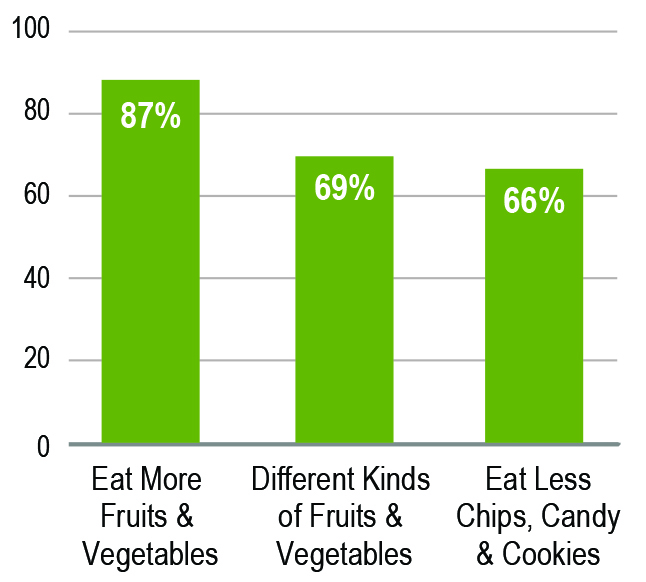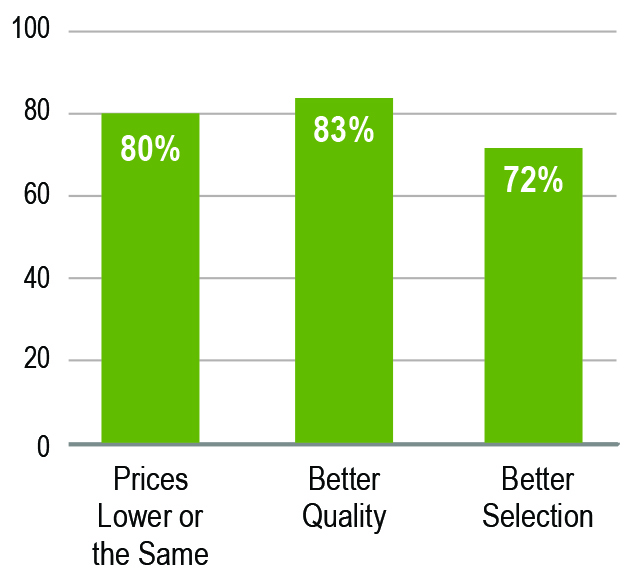SNAP Incentives in Farmers Markets: The Double Up Food Bucks Consumer Experience
November 30, 2015
Source: Altarum Institute Health Policy Forum
Author: Kate Fitzgerald
Too many Americans suffer from debilitating chronic health conditions, and Michiganders are no exception: More than 31 percent of the state’s adults are obese, 1 in 10 has diabetes, and the state’s heart disease rate is one of the highest in the country.1 All of these conditions are related to unhealthy diets, a hallmark of which is an inadequate consumption of produce. The burden is most acute in low-income communities where there is not easy access to high-quality affordable food and where the local built and social environments often do not foster healthy food cultures.
In a new report, Fair Food Network looks at Supplemental Nutrition Assistance Program (SNAP, formerly food stamps) consumers’ experience in using Michigan’s statewide healthy food incentive program, Double Up Food Bucks (Double Up), in farmers markets. Double Up, a project of Fair Food Network, matches SNAP benefits spent at participating retail locations with additional funds for the purchase of fresh Michigan-grown fruits and vegetables.
The Double Up program design overcomes the two most common barriers to produce consumption by SNAP participants: It increases the amount that families have available to spend on produce and uses the new buying power to bring farm-fresh fruits and vegetables into underserved low-income communities. In this way, Double Up simultaneously creates both a demand for and supply of healthy produce.

The program’s benefits run deeper, however. Farmers markets foster healthy social networks. Also, the many personal interactions provide effective environments for experiential nutrition education.2
The Centers for Disease Control and Prevention includes access to farmers markets among its key indicators of food environments that support the consumption of fruits and vegetables. Similarly, respondents in a national study of incentive programs reported that incentives in local farmers markets improve the health of their communities.3
Double Up participants overwhelmingly report that the quality and selection at the farmers markets are much better, and the prices are either the same or lower than where they usually shop. Perhaps equally powerful is how SNAP participants value their food dollars supporting area farmers. Double Up shoppers talk about the importance of the relational aspects of the program and teaching their children about food and health just as much as they credit the immediate financial assistance that it provides.

Each year, the demand for Double Up grows, participants consistently report that they eat more fruit and vegetables as a result of the incentives, and the value of SNAP dollars spent with farmers across the state increases.
The Michigan experience demonstrates that well-designed programs can exert positive influences on individual dietary behavior as well as on culture and community food environments.
All of these are necessary steps for getting Michigan and the nation back on the road to dietary health.
Read the entire report at Fair Food Network’s website.
Sources
1. Trust for America’s Health and Robert Wood Johnson Foundation. (2014, May). Investing in America’s health: A state-by-state look at public health funding and key health facts.
2. Farmers Market Coalition. (2013). "Markets are up!"
3. McCarthy, R. (2010). "Evaluating the social, financial, and human capital impacts of farmers markets."
First posted at Altarum Institute Health Policy Forum on October 6, 2015.







